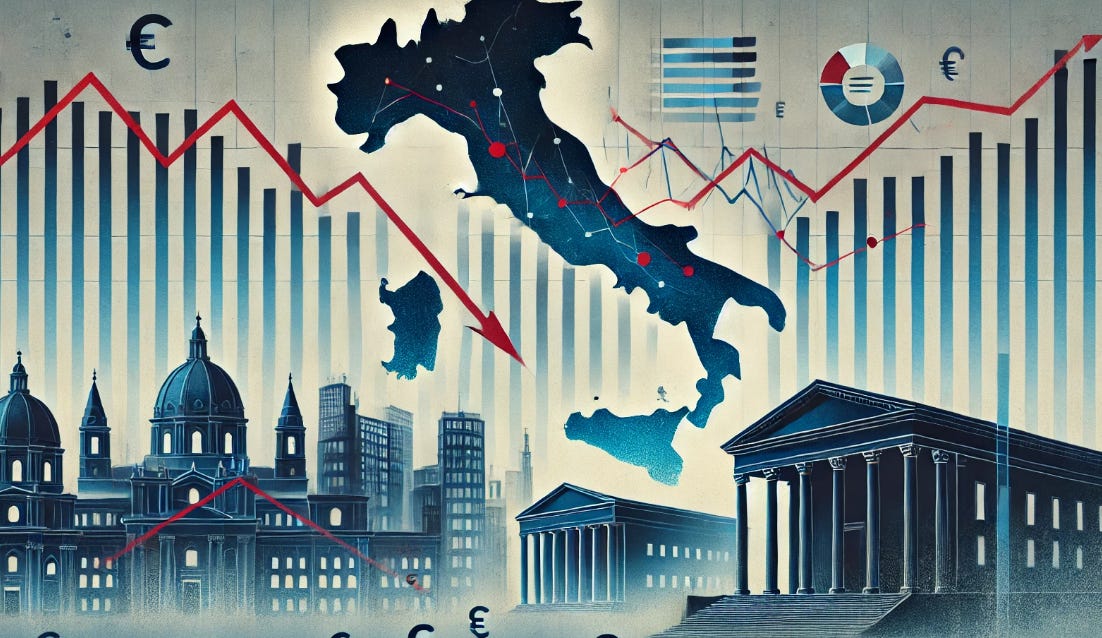The recent analysis on securitisation in Europe and Oliver Wyman's recent proposal highlights critical issues that can no longer be ignored. The gap with the United States is clear: while overseas this instrument is massively exploited, in the Old Continent it remains held back by regulatory barriers and a regulatory environment that limits its attractiveness to investors.
Nevertheless, the effectiveness of securitisation is a fact. In Italy, between 2017 and 2022, the combination of securitisation and the state guarantee for non-performing loans (GACS) has significantly reduced the risk on banks' balance sheets, with the overall stock falling by more than 250 billion over five years, demonstrating that these instruments, if well structured, can have a positive impact on financial stability.
The central problem is the usual one: the conflict between strong regulation and the free market. On the one hand, stricter regulation reduces the risk of default and improves transparency, thereby protecting the financial system. On the other hand, they increase costs and make it less convenient to operate in the sector, thereby reducing the volume of securitisation.
My comments on Oliver Wyman proposal
Oliver Wyman's report suggests four directions to revive the market: incentivise European insurance investment, simplify STS categorisation, favour full securitisation over synthetic securitisation and revise due diligence rules. These are concrete proposals that could kick-start the sector.
With regard to the first suggestion, this is certainly a suggestive hypothesis that could have a significant impact on market dynamics. However, it is based on the assumption of a kind of "cultural revolution" that would succeed in replacing the strong preference for government bonds in the strategies of insurance institutions.
The following 4 points are perfectly reasonable in theory and are in line with all the main analyses of the competitiveness of the euro area, in particular those coordinated by Mario Draghi and Enrico Letta. However, in order to be taken into account in practice, they require a general reflection on the level of risk that the European authorities are prepared to tolerate in view of the development of market volumes.
The current regulatory framework aims at a detailed and capillary control of originators' internal rules and procedures to verify the existence of high safety standards in risk management. Any assumption of simplification, both in the due diligence phase and in the regulation of STS securitisations, necessarily entails the acceptance of higher risks, which the financial markets have long demonstrated that they are able to price appropriately.
A fifth element, not mentioned by Oliver Wyman but which could usefully be considered, is greater competition among the rating agencies, which currently operate in a kind of oligopoly that discourages reductions in fees and experimentation with less conservative methods of valuing underlying portfolios.
Conclusion
To truly revive securitisation in Europe, one fundamental principle must be accepted: financial intermediaries must manage and price risks, not zero them out. A healthy market cannot live under the illusion of zero risk, but must strike a balance between stability and convenience. If Europe wants to close the gap with the US, less bureaucratic rigidity and more room for a dynamic market are needed, without compromising the security of the system.
Entering Italian NPE Market is a Newsletter and a Linkedin Group focused on News, Updates, and Insights on Italian Banks, Distressed Credit Markets, Fintech, and Real Estate.
DBRS on Major Italian Banks
Italy’s largest banks experienced a contraction in their loan books in 2024, continuing a trend from the previous year, even as a modest rebound in lending activity emerged in the latter part of the year. According to a recent commentary by Morningstar DBRS, the rebound may prove short-lived as persistent economic uncertainty and rising trade tariffs weigh on both demand for loans and credit supply.
Relevant Links:
https://www.bebankers.it/cartolarizzazione-in-europa-il-dilemma-tra-regole-e-mercato-alla-base-del-divario-con-gli-usa/
This newsletter is free please consider supporting it with a small donation
See my full professional profile (available for consulting projects)
My Podcast on Financial News and Education
My new Podcast on Italian Politics




